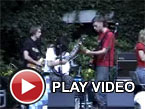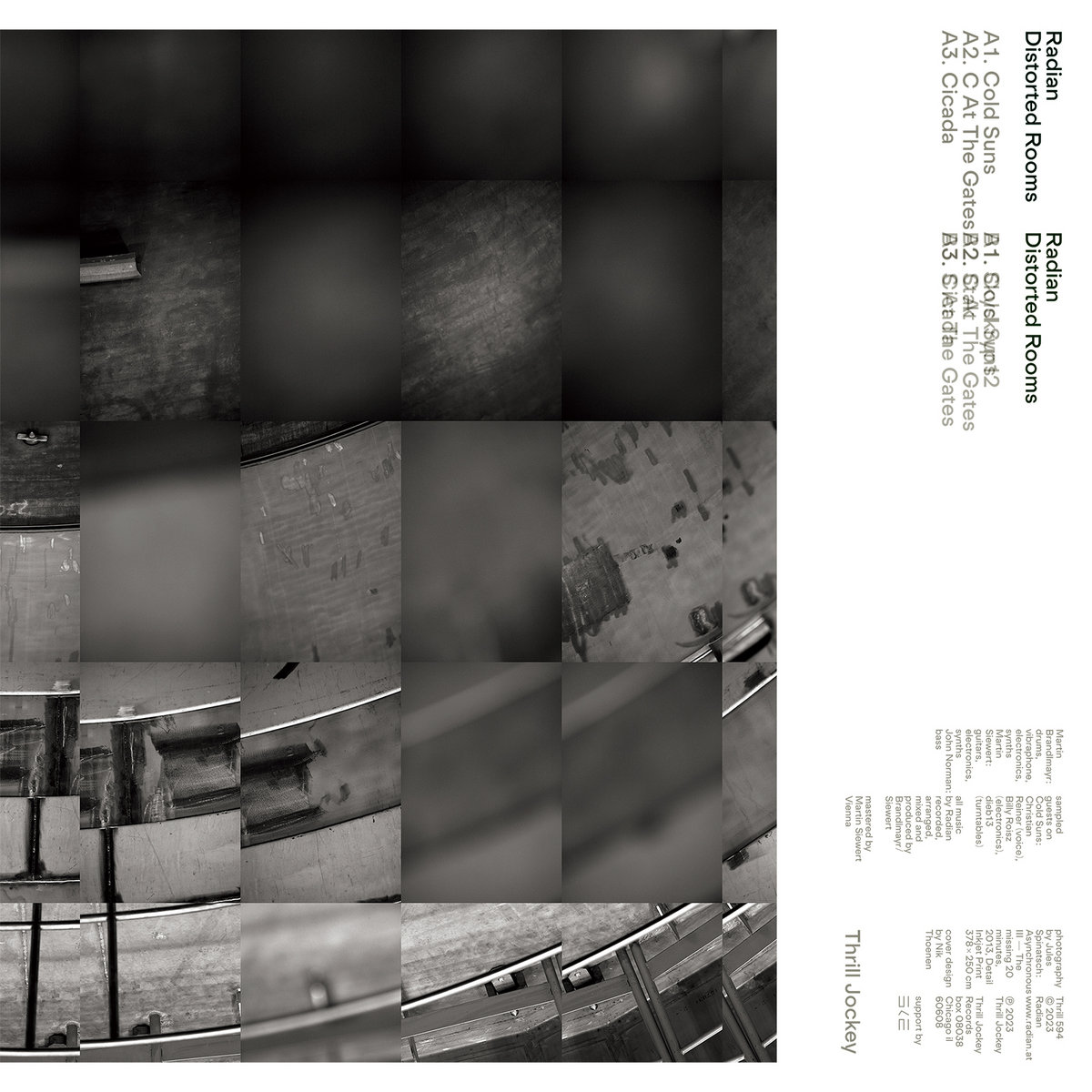 It has somehow been seven years since this long-running Vienna trio last surfaced with 2016's stellar On Dark Silent Off, but they seem to have spent that time diligently dreaming up innovative new ways to be amazing. In a general sense, Radian's vision is not a far cry from the austere, jazz-adjacent post-rock of their celebrated labelmates Tortoise. The magic of Radian, however, lies in the band's singular attention to detail and their quixotic compulsion to continually turn sounds upside-down in imaginative feats of dynamic sorcery. The overall effect is akin to that of dub techno being made by an incredibly tight live band, but the live aspect is quite illusory, as Distorted Rooms presumably sounds almost nothing like what the band originally recorded (in fact, the band themself note that one piece "eliminates nearly all traces of the original performance"). While many of the sounds do remain present in one form or another, Radian revels in celebrating and amplifying the barely audible and non-musical bits while also eliminating or burying the louder, more traditional "rock" tropes like chords and melodies. Obviously, The Dead C have made a fine career out of similarly deconstructing and inverting rock music, but Radian are the gleaming, precision-engineered opposite of Dead C's own shambling, spontaneous, and blown-out vision.
It has somehow been seven years since this long-running Vienna trio last surfaced with 2016's stellar On Dark Silent Off, but they seem to have spent that time diligently dreaming up innovative new ways to be amazing. In a general sense, Radian's vision is not a far cry from the austere, jazz-adjacent post-rock of their celebrated labelmates Tortoise. The magic of Radian, however, lies in the band's singular attention to detail and their quixotic compulsion to continually turn sounds upside-down in imaginative feats of dynamic sorcery. The overall effect is akin to that of dub techno being made by an incredibly tight live band, but the live aspect is quite illusory, as Distorted Rooms presumably sounds almost nothing like what the band originally recorded (in fact, the band themself note that one piece "eliminates nearly all traces of the original performance"). While many of the sounds do remain present in one form or another, Radian revels in celebrating and amplifying the barely audible and non-musical bits while also eliminating or burying the louder, more traditional "rock" tropes like chords and melodies. Obviously, The Dead C have made a fine career out of similarly deconstructing and inverting rock music, but Radian are the gleaming, precision-engineered opposite of Dead C's own shambling, spontaneous, and blown-out vision.
Thrill Jockey
The opening "Cold Suns" was also the album's first single, but it is unclear if it was chosen because the band believed it to be one of the most perfect distillations of their vision or if they merely thought it was one of the album's more immediately gratifying pieces. I suspect the reason may be the latter, as the album's second single "Skyskryp12" features a similar level of comparatively heightened drama. For the most part, however, "Cold Suns" offers a fairly representative first impression of Radian's current direction: gently stuttering loops, killer drumming, and a remarkably minimalist palette of guitar sounds. Unlike many other songs on the album, however, it eventually coheres into a brooding and tense chord progression, which lands the piece in somewhere near the post-punk revivalism of Moin (at least until the bottom drops out for a lengthy outro of distorted vocals, smoldering distortion, whimpering synth quivers, and broken, skeletal drums). "Skyskryp12" has a roughly similar aesthetic, but with one key difference: after it collapses upon itself, it kicks back into gear and builds towards a darkly cinematic crescendo. While both pieces are admittedly enjoyable and satisfying, however, the album's strongest pieces tend to be the ones with a bit of a lighter touch.
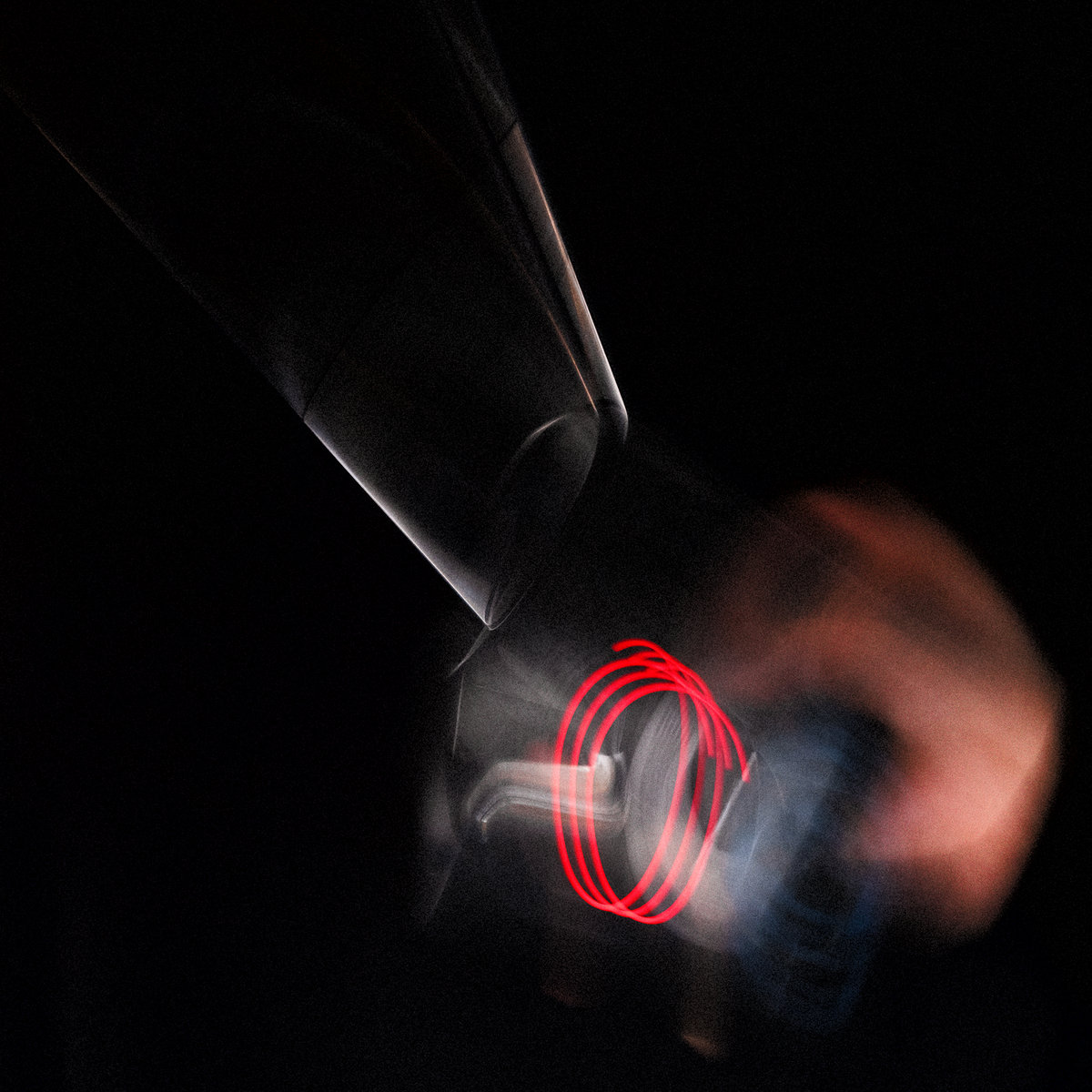 This is one of the more enigmatic and compellingly inscrutable albums that I have heard in quite some time, but I could probably say the same thing about a half dozen other Aki Onda albums at this point. This particular project began in 2006 when Onda acquired a slim handheld AM/FM radio/cassette recorder and began bringing it with him whenever he traveled: each night when he went to bed, he would turn on the radio and scan the dial in search of something interesting to soundtrack his descent into sleep.
This is one of the more enigmatic and compellingly inscrutable albums that I have heard in quite some time, but I could probably say the same thing about a half dozen other Aki Onda albums at this point. This particular project began in 2006 when Onda acquired a slim handheld AM/FM radio/cassette recorder and began bringing it with him whenever he traveled: each night when he went to bed, he would turn on the radio and scan the dial in search of something interesting to soundtrack his descent into sleep. 

 I have not encountered Dan Colussi's work before this album, but the Turin-born artist is a bit of a lifer, as he has been steadily releasing music and touring for the last 20 years with various Canadian bands "of varying degrees of obscurity." His solo project, Fortunato Durutti Marinetti, first surfaced back in 2020 with the acclaimed Desire cassette. This latest release is his second for Soft Abuse (and his first for Quindi) and it is something of a bold creative leap forward, as returning collaborator/producer Sandro Perri has steered the project into a more synthpop direction with the addition of synths, drum machines, and other electronic touches.
I have not encountered Dan Colussi's work before this album, but the Turin-born artist is a bit of a lifer, as he has been steadily releasing music and touring for the last 20 years with various Canadian bands "of varying degrees of obscurity." His solo project, Fortunato Durutti Marinetti, first surfaced back in 2020 with the acclaimed Desire cassette. This latest release is his second for Soft Abuse (and his first for Quindi) and it is something of a bold creative leap forward, as returning collaborator/producer Sandro Perri has steered the project into a more synthpop direction with the addition of synths, drum machines, and other electronic touches.  This latest full-length from NY-based composer/multi-instrumentalist Lea Bertucci features two longform Just Intonation commissions composed for small ensembles. Given that, it is no surprise that Of Shadow and Substance is a unique album within her discography, but the added participants and the non-standard tuning were not the only new elements, as Bertucci embraced a "textural approach to composition" as well.
This latest full-length from NY-based composer/multi-instrumentalist Lea Bertucci features two longform Just Intonation commissions composed for small ensembles. Given that, it is no surprise that Of Shadow and Substance is a unique album within her discography, but the added participants and the non-standard tuning were not the only new elements, as Bertucci embraced a "textural approach to composition" as well. 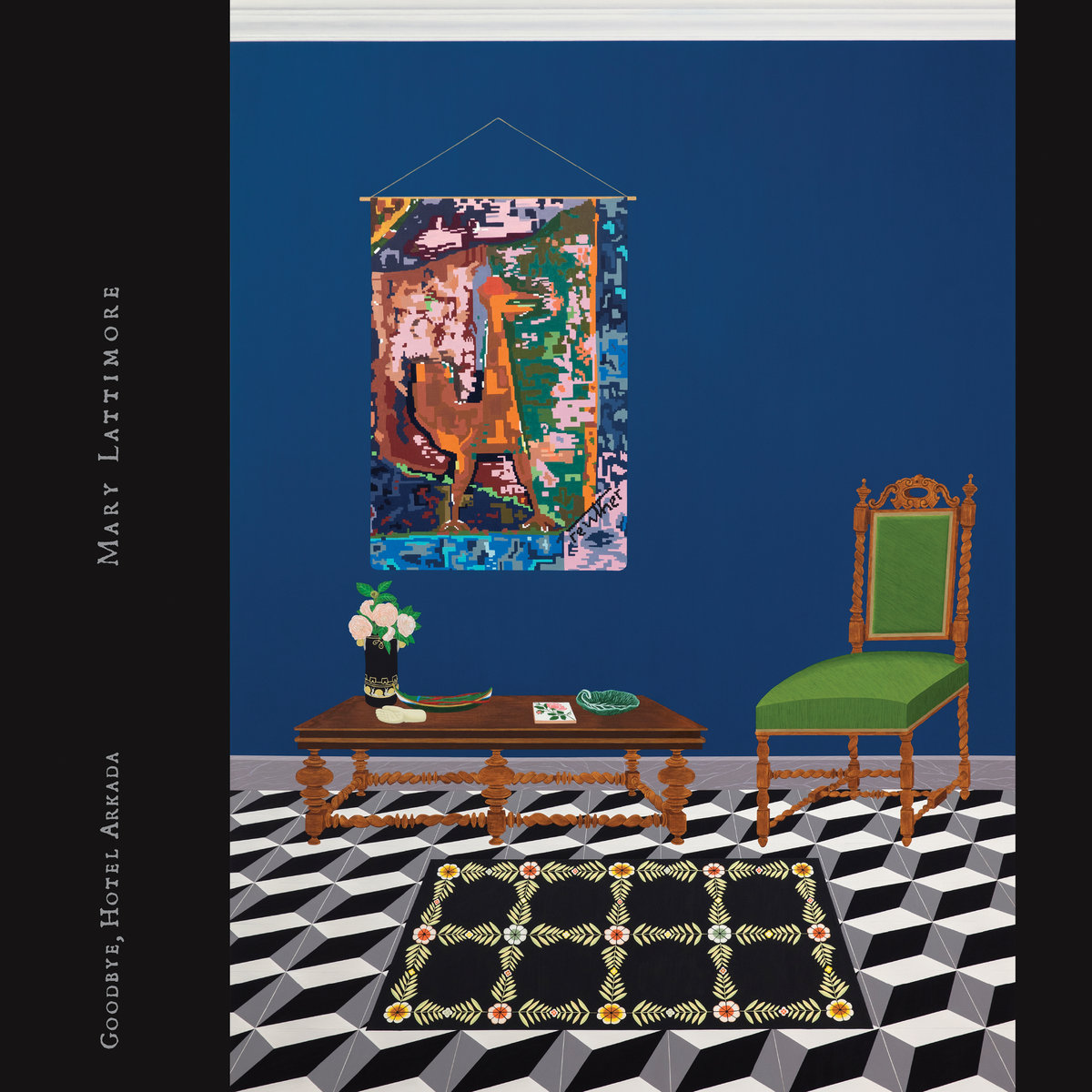 This six-song album borrows its title from a beloved Croatian hotel damningly slated for modernization, which is a fitting inspiration for an album that "celebrates and mourns the tragedy and beauty of the ephemeral." Obviously, that is an especially resonant theme these days, given the endlessly accelerating pace of change and the relentless erosion of the comforting and familiar. Lattimore has always been unusually well-attuned to such feelings, but Goodbye, Hotel Arkada is also inspired by her passions for collaboration and travel, both of which "shake loose strands of inspiration."
This six-song album borrows its title from a beloved Croatian hotel damningly slated for modernization, which is a fitting inspiration for an album that "celebrates and mourns the tragedy and beauty of the ephemeral." Obviously, that is an especially resonant theme these days, given the endlessly accelerating pace of change and the relentless erosion of the comforting and familiar. Lattimore has always been unusually well-attuned to such feelings, but Goodbye, Hotel Arkada is also inspired by her passions for collaboration and travel, both of which "shake loose strands of inspiration."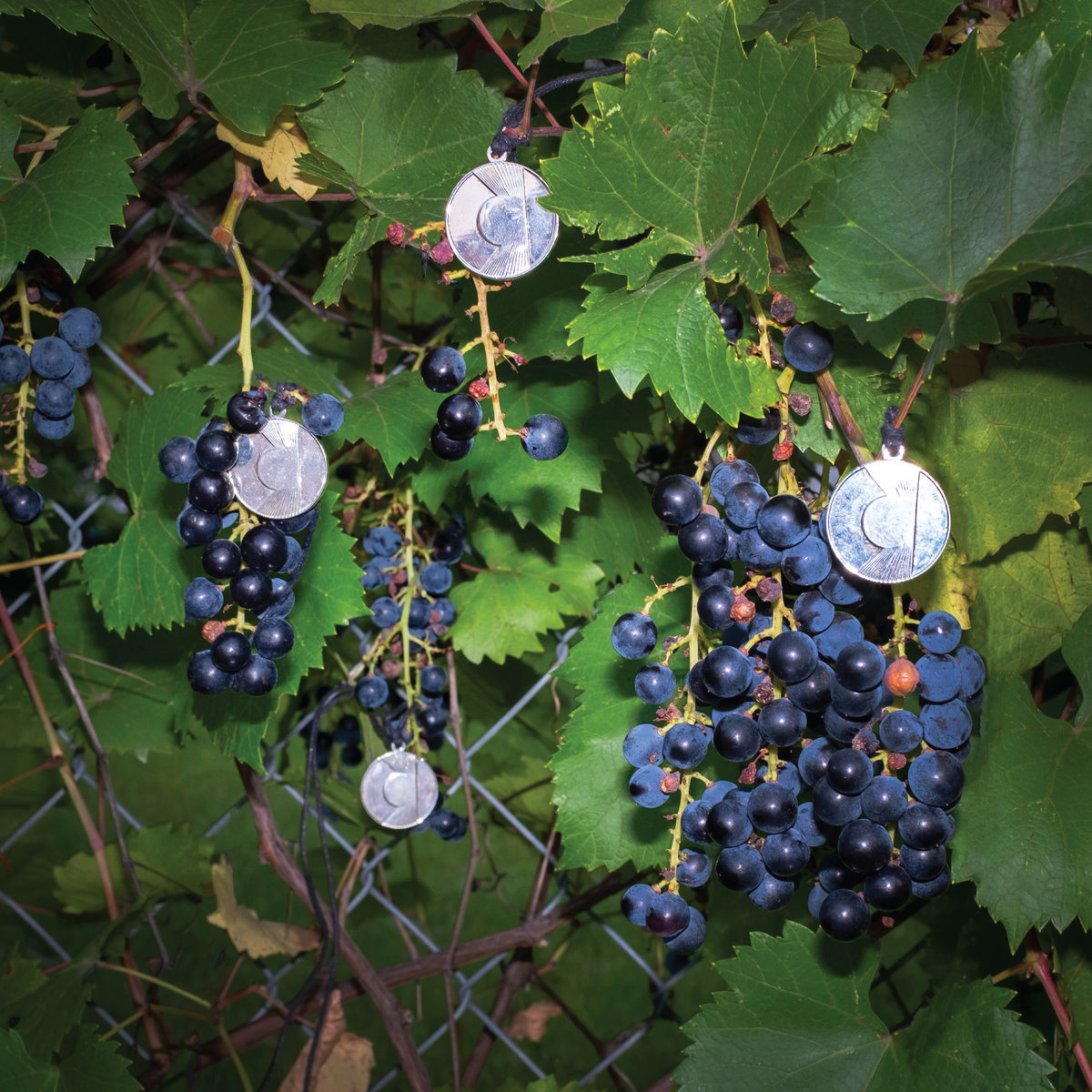 This is not my first exposure to Nathan Nelson's freewheeling Twin-Cities improv collective, but it may as well have been, as the droning kosmische psychedelia of last year's Embrace You Millions provided no hint at all of the dramatic stylistic reinvention looming on the horizon. To my ears, the band's entertaining new direction is best described as "James Chance fronts the B-52s," but the album's description goes even further and promises both "a spiritually-charged journey" and "a shit-kicking party record." The fact that Presents emphatically delivers on the latter claim is quite an impressive feat indeed, as the number of shit-kicking party records successfully recorded by shapeshifting collectives of synth and space rock enthusiasts tends to historically be quite low. To their everlasting credit, American Cream Band buck that trend quite decisively, as Nelson seems literally evangelical in his desire to make a fun and raucous party album and he assembled one hell of a killer band to bring that dream to life.
This is not my first exposure to Nathan Nelson's freewheeling Twin-Cities improv collective, but it may as well have been, as the droning kosmische psychedelia of last year's Embrace You Millions provided no hint at all of the dramatic stylistic reinvention looming on the horizon. To my ears, the band's entertaining new direction is best described as "James Chance fronts the B-52s," but the album's description goes even further and promises both "a spiritually-charged journey" and "a shit-kicking party record." The fact that Presents emphatically delivers on the latter claim is quite an impressive feat indeed, as the number of shit-kicking party records successfully recorded by shapeshifting collectives of synth and space rock enthusiasts tends to historically be quite low. To their everlasting credit, American Cream Band buck that trend quite decisively, as Nelson seems literally evangelical in his desire to make a fun and raucous party album and he assembled one hell of a killer band to bring that dream to life. It has somehow been seven years since this long-running Vienna trio last surfaced with 2016's stellar On Dark Silent Off, but they seem to have spent that time diligently dreaming up innovative new ways to be amazing. In a general sense, Radian's vision is not a far cry from the austere, jazz-adjacent post-rock of their celebrated labelmates Tortoise. The magic of Radian, however, lies in the band's singular attention to detail and their quixotic compulsion to continually turn sounds upside-down in imaginative feats of dynamic sorcery. The overall effect is akin to that of dub techno being made by an incredibly tight live band, but the live aspect is quite illusory, as Distorted Rooms presumably sounds almost nothing like what the band originally recorded (in fact, the band themself note that one piece "eliminates nearly all traces of the original performance"). While many of the sounds do remain present in one form or another, Radian revels in celebrating and amplifying the barely audible and non-musical bits while also eliminating or burying the louder, more traditional "rock" tropes like chords and melodies. Obviously, The Dead C have made a fine career out of similarly deconstructing and inverting rock music, but Radian are the gleaming, precision-engineered opposite of Dead C's own shambling, spontaneous, and blown-out vision.
It has somehow been seven years since this long-running Vienna trio last surfaced with 2016's stellar On Dark Silent Off, but they seem to have spent that time diligently dreaming up innovative new ways to be amazing. In a general sense, Radian's vision is not a far cry from the austere, jazz-adjacent post-rock of their celebrated labelmates Tortoise. The magic of Radian, however, lies in the band's singular attention to detail and their quixotic compulsion to continually turn sounds upside-down in imaginative feats of dynamic sorcery. The overall effect is akin to that of dub techno being made by an incredibly tight live band, but the live aspect is quite illusory, as Distorted Rooms presumably sounds almost nothing like what the band originally recorded (in fact, the band themself note that one piece "eliminates nearly all traces of the original performance"). While many of the sounds do remain present in one form or another, Radian revels in celebrating and amplifying the barely audible and non-musical bits while also eliminating or burying the louder, more traditional "rock" tropes like chords and melodies. Obviously, The Dead C have made a fine career out of similarly deconstructing and inverting rock music, but Radian are the gleaming, precision-engineered opposite of Dead C's own shambling, spontaneous, and blown-out vision.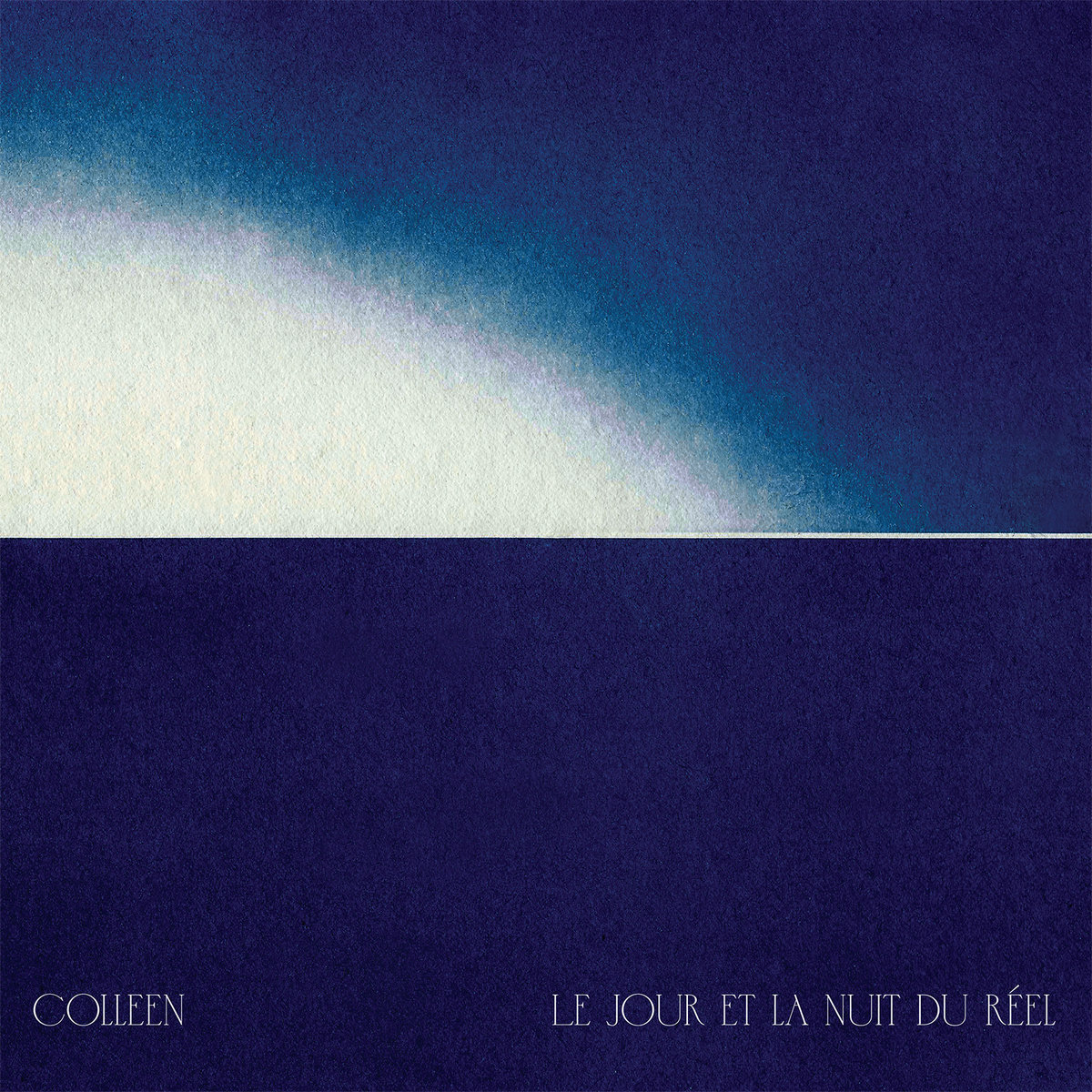 As someone who has loved Cécile Schott's work since 2003's Everyone Alive Wants Answers, I have long been fascinated by the various twists and turns that her vision has undergone over the years. While there have certainly been stretches in which she has lingered upon a vision for more than one album, Schott's creative restlessness invariably steers her into adventurous and unfamiliar territory eventually. As a result, Colleen's small discography is divided into an impressive number of distinct phases (the sample-driven collage era, the viola da gamba years, the synthesizer years, etc.). In a general sense, this latest full-length (her ninth) is a continuation her recent synthesizer phase, but it is also a significant break from her previous work in that vein: Le jour et la nuit du réel is seven-suite double album of minimalist vignettes exploring how a motif can be significantly transformed through the manipulation of synthesizer settings alone. Given the fundamental constraints of that vision, the album admittedly feels a bit less substantial than several of Colleen's previous releases, but connoisseurs of nuance and elegant simplicity will find much to love.
As someone who has loved Cécile Schott's work since 2003's Everyone Alive Wants Answers, I have long been fascinated by the various twists and turns that her vision has undergone over the years. While there have certainly been stretches in which she has lingered upon a vision for more than one album, Schott's creative restlessness invariably steers her into adventurous and unfamiliar territory eventually. As a result, Colleen's small discography is divided into an impressive number of distinct phases (the sample-driven collage era, the viola da gamba years, the synthesizer years, etc.). In a general sense, this latest full-length (her ninth) is a continuation her recent synthesizer phase, but it is also a significant break from her previous work in that vein: Le jour et la nuit du réel is seven-suite double album of minimalist vignettes exploring how a motif can be significantly transformed through the manipulation of synthesizer settings alone. Given the fundamental constraints of that vision, the album admittedly feels a bit less substantial than several of Colleen's previous releases, but connoisseurs of nuance and elegant simplicity will find much to love.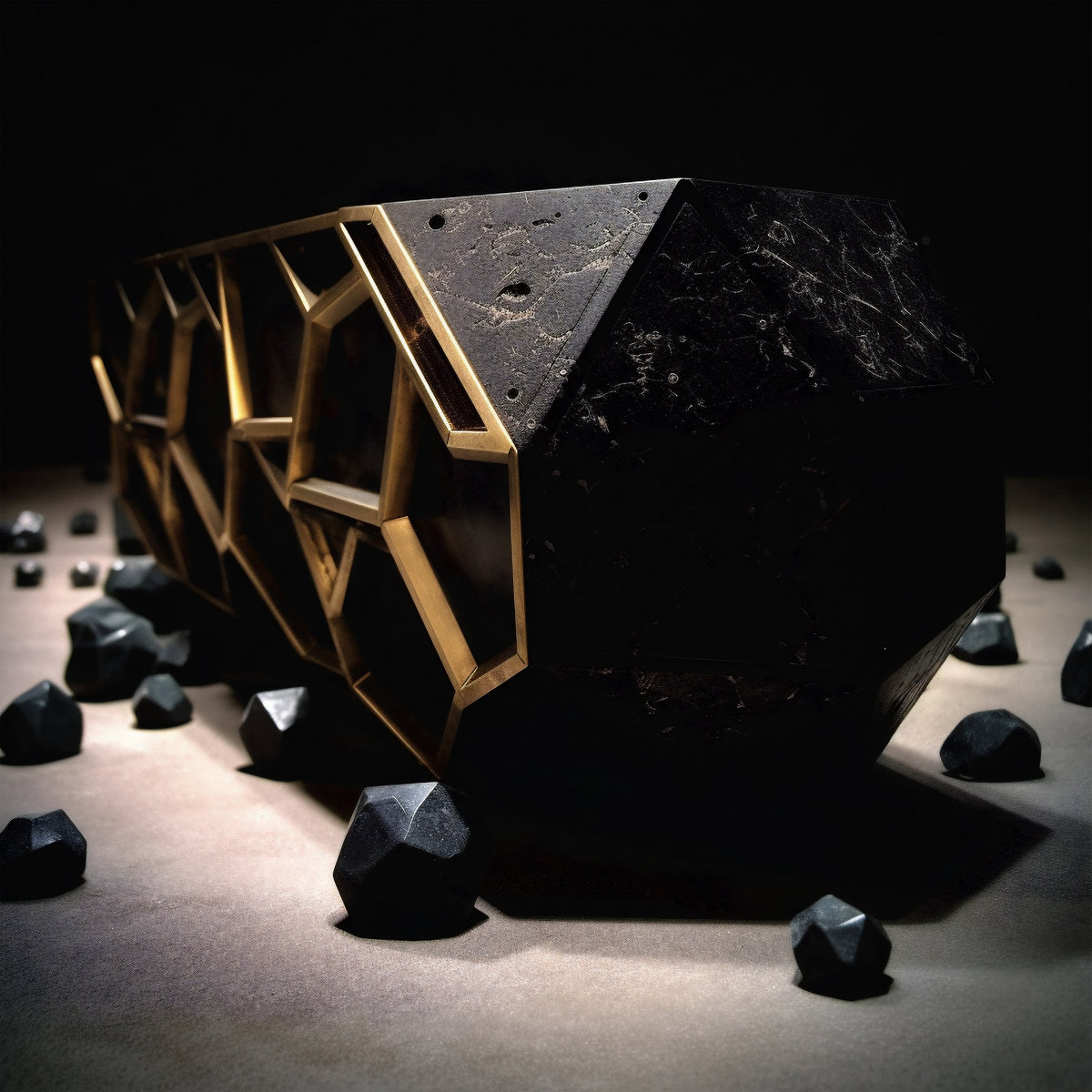 I enjoyed Nicol Eltzroth Rosendorf's gnarled, doom-soaked debut Big Other (2020) quite a bit, but I enjoyed it in a casual way and failed to truly grasp the full extent of his singular and ambitious vision. While that situation has thankfully been remedied by this latest opus, the music of Internal Return is just one piece of a much larger and more complex ambition that incorporates Jewish tradition, artificial intelligence, video art, and a uniquely disturbing visual aesthetic that resembles a vivid sci-fi nightmare that blurs together several dystopian cinematic futures at once. Curiously, when taken by itself, the music of Internal Return is more elusive and ambiguous than its more crushing and epic predecessor. When combined with Rosendorf's AI-created videos, however, Internal Return transforms into a viscerally unsettling mindfuck that will probably haunt me for weeks. As Rosendorf himself puts it: "It is not a comfortable place to be in, at least not exactly; like being adrift in an imageless dream, it produces monsters of a kind that, once they are receding into memory, we get the sense they were not actually terrifying, just... strange." Hopefully, those monsters will recede into memory for me soon, as I am still very much lingering in the "terrified" stage for now.
I enjoyed Nicol Eltzroth Rosendorf's gnarled, doom-soaked debut Big Other (2020) quite a bit, but I enjoyed it in a casual way and failed to truly grasp the full extent of his singular and ambitious vision. While that situation has thankfully been remedied by this latest opus, the music of Internal Return is just one piece of a much larger and more complex ambition that incorporates Jewish tradition, artificial intelligence, video art, and a uniquely disturbing visual aesthetic that resembles a vivid sci-fi nightmare that blurs together several dystopian cinematic futures at once. Curiously, when taken by itself, the music of Internal Return is more elusive and ambiguous than its more crushing and epic predecessor. When combined with Rosendorf's AI-created videos, however, Internal Return transforms into a viscerally unsettling mindfuck that will probably haunt me for weeks. As Rosendorf himself puts it: "It is not a comfortable place to be in, at least not exactly; like being adrift in an imageless dream, it produces monsters of a kind that, once they are receding into memory, we get the sense they were not actually terrifying, just... strange." Hopefully, those monsters will recede into memory for me soon, as I am still very much lingering in the "terrified" stage for now. These two singular artists have been fitfully playing together for roughly a decade now and they have released a number of albums documenting their incredible duo performances. Notably, their most recent union was for 2021's absolutely killer Made Out of Sound album, but that one was a bit of an aberration for the duo, as it was a studio creation crafted remotely. Happily, Play at Duke captures the pair back together on stage where they belong. The stage in question was unsurprisingly at Duke University, but the album's prosaic title omits a rather significant detail: the performance in question closed out Three Lobed Recording's 21st anniversary festival in appropriately riveting fashion. While both artists rank among my favorite musicians and have truly incredible chemistry as an improv unit, some performances are undeniably better than others and Play at Duke feels like an especially inspired night to me. Moreover, Orcutt and Corsano make a virtue of brevity as well, as there is not a single wasted note or even a hint of a lull in this 25-minute tour de force.
These two singular artists have been fitfully playing together for roughly a decade now and they have released a number of albums documenting their incredible duo performances. Notably, their most recent union was for 2021's absolutely killer Made Out of Sound album, but that one was a bit of an aberration for the duo, as it was a studio creation crafted remotely. Happily, Play at Duke captures the pair back together on stage where they belong. The stage in question was unsurprisingly at Duke University, but the album's prosaic title omits a rather significant detail: the performance in question closed out Three Lobed Recording's 21st anniversary festival in appropriately riveting fashion. While both artists rank among my favorite musicians and have truly incredible chemistry as an improv unit, some performances are undeniably better than others and Play at Duke feels like an especially inspired night to me. Moreover, Orcutt and Corsano make a virtue of brevity as well, as there is not a single wasted note or even a hint of a lull in this 25-minute tour de force. While I am a fan of both DJ Python (Brian Piñeyro) and Ana Roxanne, a collaboration between the two is not something that I would have ever foreseen happening due to the substantial gulf between their styles. Unusual circumstances can lead to unexpected places, however, and the two mutual admirers found themselves both adrift and living in NYC in 2020 ("well-loved albums aside, no one was playing shows, and a general listlessness and disconnection prevailed"). As a result, the two finally met in person and soon began working on new music together ("studio experimentation was the instinctive extension of a friendship finding its feet"). Before they could finish an album, however, circumstances changed again and Piñeyro returned to the European club scene, while Roxanne toured the world and moved back to California.
While I am a fan of both DJ Python (Brian Piñeyro) and Ana Roxanne, a collaboration between the two is not something that I would have ever foreseen happening due to the substantial gulf between their styles. Unusual circumstances can lead to unexpected places, however, and the two mutual admirers found themselves both adrift and living in NYC in 2020 ("well-loved albums aside, no one was playing shows, and a general listlessness and disconnection prevailed"). As a result, the two finally met in person and soon began working on new music together ("studio experimentation was the instinctive extension of a friendship finding its feet"). Before they could finish an album, however, circumstances changed again and Piñeyro returned to the European club scene, while Roxanne toured the world and moved back to California. This latest collection from Folklore Tapes borrows its title from a Japanese proverb about knowing one's limitations ("the frog in the well knows nothing of the sea"), which was itself borrowed from a Chinese fable. In the context of an album devoted to UFO lore, of course, humans are the frogs, the infinite universe is the ocean, and the usual eclectic Folklore Tapes cast of characters gleefully devote themselves to celebrating the colorful hoaxes and stories of their countrymen who claim to have experienced a visit from extraterrestrial life. While alien visitations are admittedly a bit outside the usual realm of Folklore Tapes' research, I would be hard pressed to think of a roster of artists better suited to tackle the topic, as just about everyone involved brings a freewheeling playfulness to the theme and surprises abound. This is yet another characteristically brilliant and inspired compilation from the inimitable Folklore Tapes. Hell, it might even be their best yet.
This latest collection from Folklore Tapes borrows its title from a Japanese proverb about knowing one's limitations ("the frog in the well knows nothing of the sea"), which was itself borrowed from a Chinese fable. In the context of an album devoted to UFO lore, of course, humans are the frogs, the infinite universe is the ocean, and the usual eclectic Folklore Tapes cast of characters gleefully devote themselves to celebrating the colorful hoaxes and stories of their countrymen who claim to have experienced a visit from extraterrestrial life. While alien visitations are admittedly a bit outside the usual realm of Folklore Tapes' research, I would be hard pressed to think of a roster of artists better suited to tackle the topic, as just about everyone involved brings a freewheeling playfulness to the theme and surprises abound. This is yet another characteristically brilliant and inspired compilation from the inimitable Folklore Tapes. Hell, it might even be their best yet. As Alter's album description insightfully observes, a collaboration between these two Editions Mego alumnae "somehow seemed inevitable," yet I was still pleasantly surprised at how seamlessly Lewis and Void were able to combine their visions into something that feels both new and wonderful. On one level, the success of this union makes perfect sense, as both artists tend to turn out some of their strongest work in collaborative situations (Carter Tutti Void and Lewis's KLMNOPQ EP with Peder Mannerfelt being prime examples of that phenomenon). However, both artists excel in extremely specific realms that have some limitations: Lewis is exceptionally good at collaging non-musical sounds, while Void seems particularly adept at crafting eccentric noise-damaged techno.
As Alter's album description insightfully observes, a collaboration between these two Editions Mego alumnae "somehow seemed inevitable," yet I was still pleasantly surprised at how seamlessly Lewis and Void were able to combine their visions into something that feels both new and wonderful. On one level, the success of this union makes perfect sense, as both artists tend to turn out some of their strongest work in collaborative situations (Carter Tutti Void and Lewis's KLMNOPQ EP with Peder Mannerfelt being prime examples of that phenomenon). However, both artists excel in extremely specific realms that have some limitations: Lewis is exceptionally good at collaging non-musical sounds, while Void seems particularly adept at crafting eccentric noise-damaged techno.  This latest album from Barbieri is intended as a sister album to 2019's landmark Ecstatic Computation and has been released to correspond with the imminent reissue of the latter. The central difference between the two albums is that Myuthafoo gradually and organically took shape during Barbieri's extensive touring, as the "nomadic, interactive energy" of those many live dates inspired her to play with experimental variations in her process each night. More specifically, she would program patterns into her sequencer, then feed them into her "arsenal of noise generators" to explore different combinations and the most compelling results were set aside for future expansion and/or eventual release.
This latest album from Barbieri is intended as a sister album to 2019's landmark Ecstatic Computation and has been released to correspond with the imminent reissue of the latter. The central difference between the two albums is that Myuthafoo gradually and organically took shape during Barbieri's extensive touring, as the "nomadic, interactive energy" of those many live dates inspired her to play with experimental variations in her process each night. More specifically, she would program patterns into her sequencer, then feed them into her "arsenal of noise generators" to explore different combinations and the most compelling results were set aside for future expansion and/or eventual release. 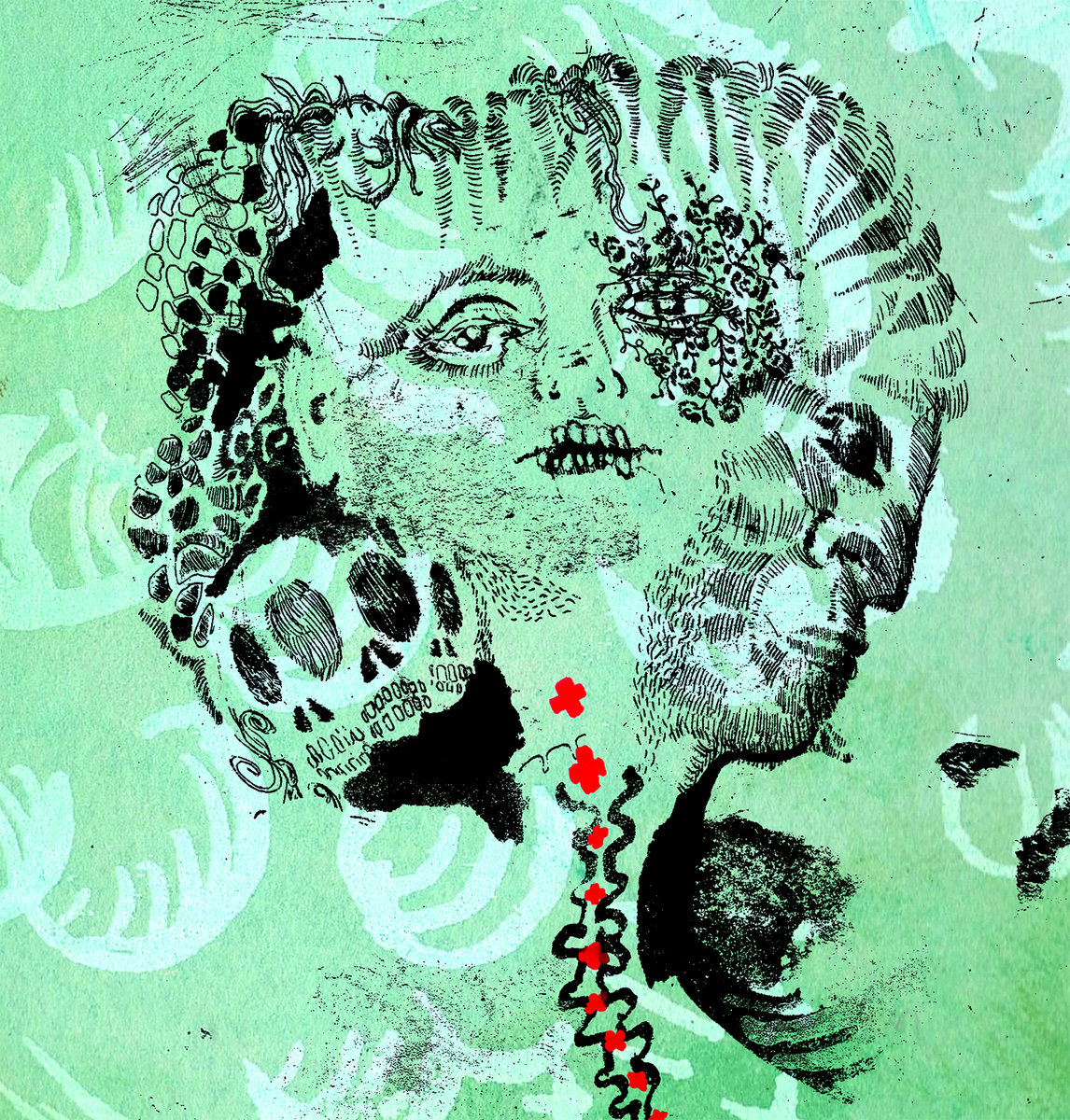 This latest LP from Big Blood is their first for Ba Da Bing and a spiritual successor of sorts to Do You Want to Have a Skeleton Dream?, as the band are back in "full family trio retro-pop extravaganza" mode. For the most part, Quinnissa (who was apparently only 13 when this album was recorded) handles the lead vocals for a series of hooky, bass-driven garage rock nuggets, though there are also a couple of headier Colleen-sung gems for fans of the band's darker, more psychedelic side. Notably, Caleb's frayed yelp is entirely absent from the proceedings, but it probably would have felt out of place among the unabashed throwback pop fare. Moreover, First Aid Kit feels like a full-on Quinnissa showcase, which makes for a rather unique entry in the Big Blood canon, as she is one hell of a belter and also spontaneously improvised all her lyrics during recordings. As Caleb notes in the album description, being in a band with your teenage daughter is admittedly something of a messy and volatile situation ("lots of practices end with her being tossed from the band"), but I can see why they are sticking with this format, as Quinnissa increasingly feels like a pop supernova in its formative stages.
This latest LP from Big Blood is their first for Ba Da Bing and a spiritual successor of sorts to Do You Want to Have a Skeleton Dream?, as the band are back in "full family trio retro-pop extravaganza" mode. For the most part, Quinnissa (who was apparently only 13 when this album was recorded) handles the lead vocals for a series of hooky, bass-driven garage rock nuggets, though there are also a couple of headier Colleen-sung gems for fans of the band's darker, more psychedelic side. Notably, Caleb's frayed yelp is entirely absent from the proceedings, but it probably would have felt out of place among the unabashed throwback pop fare. Moreover, First Aid Kit feels like a full-on Quinnissa showcase, which makes for a rather unique entry in the Big Blood canon, as she is one hell of a belter and also spontaneously improvised all her lyrics during recordings. As Caleb notes in the album description, being in a band with your teenage daughter is admittedly something of a messy and volatile situation ("lots of practices end with her being tossed from the band"), but I can see why they are sticking with this format, as Quinnissa increasingly feels like a pop supernova in its formative stages. This latest LP from Wolf Eyes is something of a major release for the duo, as they are currently celebrating their 25th year with "their first widely-distributed non-compilation album in six years." Fittingly, Dreams In Splattered Lines is one of the project's most compelling and sophisticated albums to date, which is likely the result of some recent developments that would have seemed absolutely unimaginable when the project first began (collaborating with a Pulitzer Prize winner, a viral video for a fashion company, sharing stages with jazz titans, a residency at The New York Public Library, etc.). The library residency in particular played an especially large role in shaping this album, as the duo built a number of new instruments while they were there and also spent a lot of time absorbing the Surrealism Beyond Borders exhibit at the Metropolitan Museum of Art. Of course, the truly interesting bit is how inventively Nate Young and John Olson assimilated all their new ideas, as well as the fact that their more high art/avant-garde influences amusingly collide with a newfound fascination with how "hit songs" work. While Wolf Eyes have sporadically dazzled me over the years as a cool noise band, Dreams In Splattered Lines feels like the album where they have arguably become the spiritual heirs to Throbbing Gristle in channeling the best ideas of the 20th century avant-garde into a zeitgeist-capturing mirror of the times (a post-hope world of crumbling institutions and widespread alienation).
This latest LP from Wolf Eyes is something of a major release for the duo, as they are currently celebrating their 25th year with "their first widely-distributed non-compilation album in six years." Fittingly, Dreams In Splattered Lines is one of the project's most compelling and sophisticated albums to date, which is likely the result of some recent developments that would have seemed absolutely unimaginable when the project first began (collaborating with a Pulitzer Prize winner, a viral video for a fashion company, sharing stages with jazz titans, a residency at The New York Public Library, etc.). The library residency in particular played an especially large role in shaping this album, as the duo built a number of new instruments while they were there and also spent a lot of time absorbing the Surrealism Beyond Borders exhibit at the Metropolitan Museum of Art. Of course, the truly interesting bit is how inventively Nate Young and John Olson assimilated all their new ideas, as well as the fact that their more high art/avant-garde influences amusingly collide with a newfound fascination with how "hit songs" work. While Wolf Eyes have sporadically dazzled me over the years as a cool noise band, Dreams In Splattered Lines feels like the album where they have arguably become the spiritual heirs to Throbbing Gristle in channeling the best ideas of the 20th century avant-garde into a zeitgeist-capturing mirror of the times (a post-hope world of crumbling institutions and widespread alienation). The latest ambitious durational epic from the Opalio brothers is thankfully not nearly as daunting as its 15-disc physical form suggests, as RINASCIMENTO ("Renaissance") is composed of 15 movements of varying lengths ranging from 5 to 40 minutes. The reasoning behind the unusual format is arguably twofold, as the Opalios' belief that "each sound claims its own space" is extended to dedicate a full disc to each movement and listeners are invited to "subvert the order" to make use of "random/chance operation à la Cage." There is an additional piece to the puzzle as well, however, as the handcrafted box and CD-R format were deliberately chosen as a return to MCIAA's "radical DIY" origins and as a pointed commentary on underground music's current maddening dependence on vinyl pressing plants and predatory corporations. Unsurprisingly, the primary appeal of RINASCIMENTO is the same as that of every other multi-hour MCIAA tour de force: it is a sustained and mind-altering plunge into otherworldly psychedelia that abandons nearly all earthbound notions of harmony, melody, structure, and instrumentation (and that is not an exaggeration). While the brothers' sonic palette will be a familiar one for longtime MCIAA fans (being a two-person real-time "spontaneous composition" project has some limitations), RINASCIMENTO is nevertheless one hell of a statement, as it collects the duo's most revelatory flashes of inspiration from an entire year of recordings (several of which capture the duo in peak longform form).
The latest ambitious durational epic from the Opalio brothers is thankfully not nearly as daunting as its 15-disc physical form suggests, as RINASCIMENTO ("Renaissance") is composed of 15 movements of varying lengths ranging from 5 to 40 minutes. The reasoning behind the unusual format is arguably twofold, as the Opalios' belief that "each sound claims its own space" is extended to dedicate a full disc to each movement and listeners are invited to "subvert the order" to make use of "random/chance operation à la Cage." There is an additional piece to the puzzle as well, however, as the handcrafted box and CD-R format were deliberately chosen as a return to MCIAA's "radical DIY" origins and as a pointed commentary on underground music's current maddening dependence on vinyl pressing plants and predatory corporations. Unsurprisingly, the primary appeal of RINASCIMENTO is the same as that of every other multi-hour MCIAA tour de force: it is a sustained and mind-altering plunge into otherworldly psychedelia that abandons nearly all earthbound notions of harmony, melody, structure, and instrumentation (and that is not an exaggeration). While the brothers' sonic palette will be a familiar one for longtime MCIAA fans (being a two-person real-time "spontaneous composition" project has some limitations), RINASCIMENTO is nevertheless one hell of a statement, as it collects the duo's most revelatory flashes of inspiration from an entire year of recordings (several of which capture the duo in peak longform form). This is the second solo album from NYC-based violist/composer/musicologist Annie Garlid and it borrows its name from the Greek word for "place." Notably, Garlid moved back to the US in 2018 after spending a decade in Europe (playing viola in a German opera orchestra, among other things) and that return to her home country unsurprisingly stirred up some deep and unfamiliar thoughts and feelings. Those ruminations directly inspired Topos conceptually, as the album is a meditation on the "simultaneous familiarity and foreignness" of Garlid's surroundings and her entanglement "with a place that was both in her memory and in front of her eyes." Regardless of its inspirations, Topos is a very different (and stronger) album than its predecessor United, as Garlid's medieval and baroque influences are newly downplayed in favor of a more sensuous, hallucinatory, and vocal-centric vision. While that transformation makes a lot of sense given Garlid's work with artists like Caterina Barbieri, Holly Herndon, Emptyset, and ASMR artist Claire Tolan, her assimilation of those disparate influences is impressively seamless and inventive, as Topos feels like the blossoming of a compelling and distinctive new vision.
This is the second solo album from NYC-based violist/composer/musicologist Annie Garlid and it borrows its name from the Greek word for "place." Notably, Garlid moved back to the US in 2018 after spending a decade in Europe (playing viola in a German opera orchestra, among other things) and that return to her home country unsurprisingly stirred up some deep and unfamiliar thoughts and feelings. Those ruminations directly inspired Topos conceptually, as the album is a meditation on the "simultaneous familiarity and foreignness" of Garlid's surroundings and her entanglement "with a place that was both in her memory and in front of her eyes." Regardless of its inspirations, Topos is a very different (and stronger) album than its predecessor United, as Garlid's medieval and baroque influences are newly downplayed in favor of a more sensuous, hallucinatory, and vocal-centric vision. While that transformation makes a lot of sense given Garlid's work with artists like Caterina Barbieri, Holly Herndon, Emptyset, and ASMR artist Claire Tolan, her assimilation of those disparate influences is impressively seamless and inventive, as Topos feels like the blossoming of a compelling and distinctive new vision. This latest album from Markus Popp marks yet another intriguing stylistic detour for his endlessly shapeshifting Oval project, as he delves into "an omnipresent and yet oft ill-defined, even maligned area of music and art–the romantic." The idea for this album first began as a multimedia collaboration with digital artist Robert Seidel intended for the grand opening of Frankfurt's German Romantic Museum, but the endeavor soon evolved and expanded beyond the original purpose, as the two artists "sought a more expansive definition of 'romantic,' extending outward from the museum's comprehensive survey of the 19th-century epoch in art." That said, I suspect only Popp knows how influences from literature, architecture, and visual art helped shape the album, as my ears can only process the final destination and not the journey. In the case of Romantiq, that destination feels like a series of brief vignettes/miniatures assembled from period instrumentation and filtered through Popp's fragmented and idiosyncratic vision. Given that this is an Oval album, of course, very few of the 19th-century sounds are instantly recognizable as such (aside from some occasional piano), but Popp's kaleidoscopic and deconstructed homage to the past is a characteristically compelling and intriguingly unique outlier in the Oval canon (and it is often a textural marvel as well).
This latest album from Markus Popp marks yet another intriguing stylistic detour for his endlessly shapeshifting Oval project, as he delves into "an omnipresent and yet oft ill-defined, even maligned area of music and art–the romantic." The idea for this album first began as a multimedia collaboration with digital artist Robert Seidel intended for the grand opening of Frankfurt's German Romantic Museum, but the endeavor soon evolved and expanded beyond the original purpose, as the two artists "sought a more expansive definition of 'romantic,' extending outward from the museum's comprehensive survey of the 19th-century epoch in art." That said, I suspect only Popp knows how influences from literature, architecture, and visual art helped shape the album, as my ears can only process the final destination and not the journey. In the case of Romantiq, that destination feels like a series of brief vignettes/miniatures assembled from period instrumentation and filtered through Popp's fragmented and idiosyncratic vision. Given that this is an Oval album, of course, very few of the 19th-century sounds are instantly recognizable as such (aside from some occasional piano), but Popp's kaleidoscopic and deconstructed homage to the past is a characteristically compelling and intriguingly unique outlier in the Oval canon (and it is often a textural marvel as well).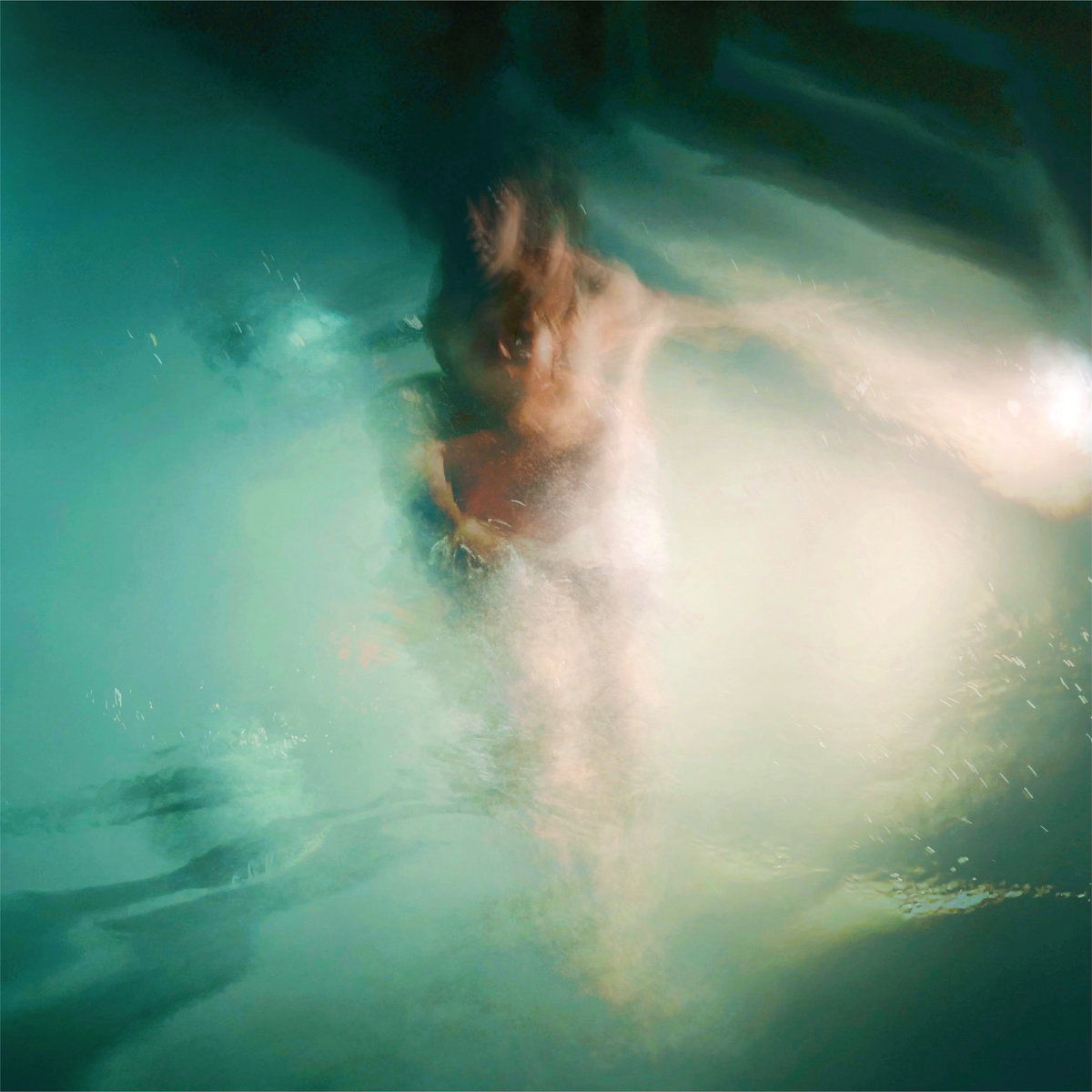 This latest full-length from Lucy Liyou is described as a "rumination on the double-sidedness of trauma and love." The title is a Korean idiom with multiple meanings ("could mean anything from fanciful daydreams to nightmarish terrors") and was chosen very deliberately, as Liyou is fascinated by what our dream lives say about us and our subconscious desires. Interestingly, Dog Dreams is billed as only Liyou's second album (she is quite a prolific artist), but apparently everything other than 2020's Welfare is considered either an EP or a collaboration. In some ways, Dog Dreams feels like a logical evolution from that debut, but I was surprised to find that Liyou moved away from her text-to-speech narratives, as I previously thought that element was absolutely central to her aesthetic. In their place, however, are elusive Robert Ashley-esque dialogues of murmuring voices hovering at the edge of intelligibility. While I expected to miss the playfully dark humor of those robotic voices quite a lot (I found them very endearing), the newly tender and human voices fit the dreamlike beauty of Dog Dreams' three sound collages quite nicely.
This latest full-length from Lucy Liyou is described as a "rumination on the double-sidedness of trauma and love." The title is a Korean idiom with multiple meanings ("could mean anything from fanciful daydreams to nightmarish terrors") and was chosen very deliberately, as Liyou is fascinated by what our dream lives say about us and our subconscious desires. Interestingly, Dog Dreams is billed as only Liyou's second album (she is quite a prolific artist), but apparently everything other than 2020's Welfare is considered either an EP or a collaboration. In some ways, Dog Dreams feels like a logical evolution from that debut, but I was surprised to find that Liyou moved away from her text-to-speech narratives, as I previously thought that element was absolutely central to her aesthetic. In their place, however, are elusive Robert Ashley-esque dialogues of murmuring voices hovering at the edge of intelligibility. While I expected to miss the playfully dark humor of those robotic voices quite a lot (I found them very endearing), the newly tender and human voices fit the dreamlike beauty of Dog Dreams' three sound collages quite nicely. This is the second duo collaboration between Chalk and Rebilly, as the pair previously surfaced with L'état Intermédiaire back in 2018. Their shared history goes back to at least 2012 though, as they teamed up with Vikki Jackman for A Paper Doll's Whisper Of Spring. While details about Tsilla are less scarce than usual due to its release on An'archives rather than Chalk's famously terse Faraway Press imprint, I still know very little about Rebilly other than the fact that he plays the clarinet. Beyond that, I am unwilling to hazard any guesses about who is playing what here, as both artists' contributions are largely blurred into a painterly haze (not entirely unfamiliar territory for Chalk). Far more relevant than the instrumentation is the album's inspiration: engraver Cécile Reims, whose "denuded landscapes," "spiraling abstractions," and "unearthly radiance" may have inspired Chalk's visual art as well. If not, Reims is at least a kindred spirit and her collaborations with Hans Bellmer, Leonor Fini, and Salvador Dali probably make a decent enough consolation prize. Reims's deepest impact on Tsilla may have been upon the process rather than the outcome, however, as the pair set out to honor her "tender weaving of emotional complexity carved with the hand-held and simple tools of artisans" in their own way ("a similar transfiguration of base materials"). Regardless of how it was made, Tsilla is quite a unique album in the Chalk canon, as the best pieces evoke a beautifully nightmarish strain of impressionism.
This is the second duo collaboration between Chalk and Rebilly, as the pair previously surfaced with L'état Intermédiaire back in 2018. Their shared history goes back to at least 2012 though, as they teamed up with Vikki Jackman for A Paper Doll's Whisper Of Spring. While details about Tsilla are less scarce than usual due to its release on An'archives rather than Chalk's famously terse Faraway Press imprint, I still know very little about Rebilly other than the fact that he plays the clarinet. Beyond that, I am unwilling to hazard any guesses about who is playing what here, as both artists' contributions are largely blurred into a painterly haze (not entirely unfamiliar territory for Chalk). Far more relevant than the instrumentation is the album's inspiration: engraver Cécile Reims, whose "denuded landscapes," "spiraling abstractions," and "unearthly radiance" may have inspired Chalk's visual art as well. If not, Reims is at least a kindred spirit and her collaborations with Hans Bellmer, Leonor Fini, and Salvador Dali probably make a decent enough consolation prize. Reims's deepest impact on Tsilla may have been upon the process rather than the outcome, however, as the pair set out to honor her "tender weaving of emotional complexity carved with the hand-held and simple tools of artisans" in their own way ("a similar transfiguration of base materials"). Regardless of how it was made, Tsilla is quite a unique album in the Chalk canon, as the best pieces evoke a beautifully nightmarish strain of impressionism.